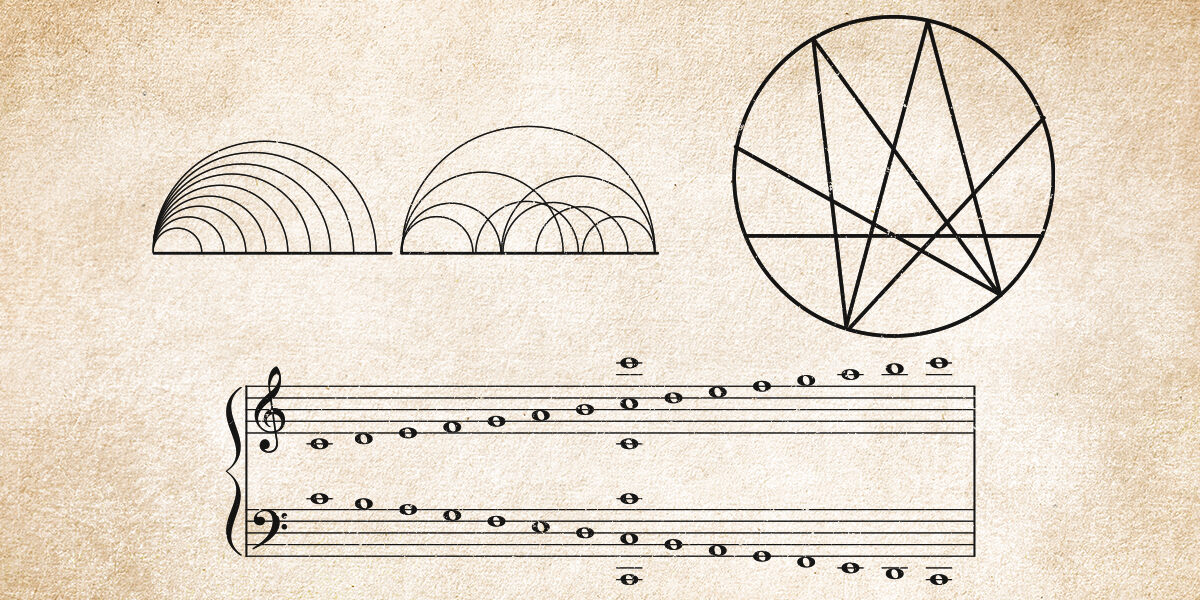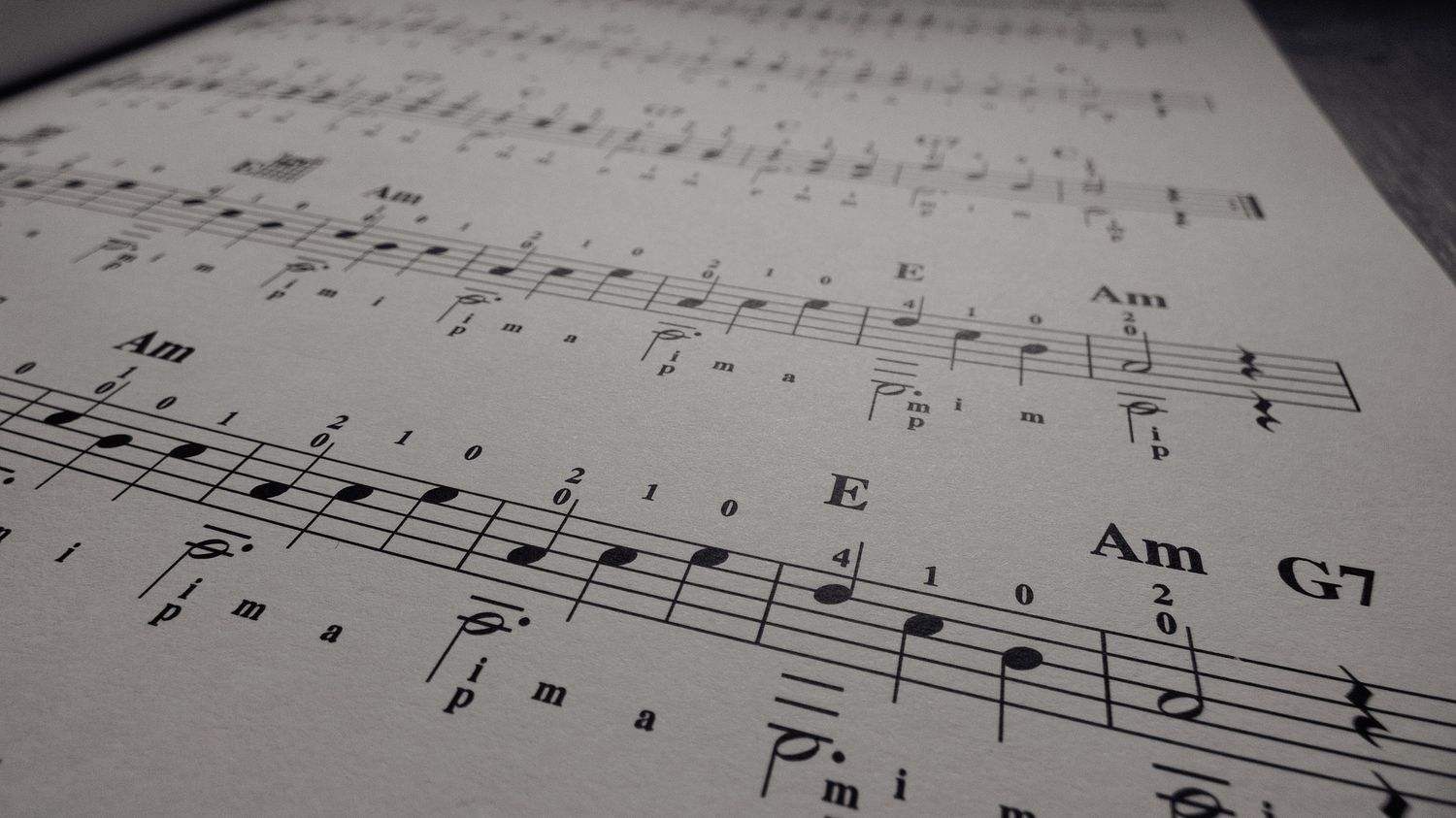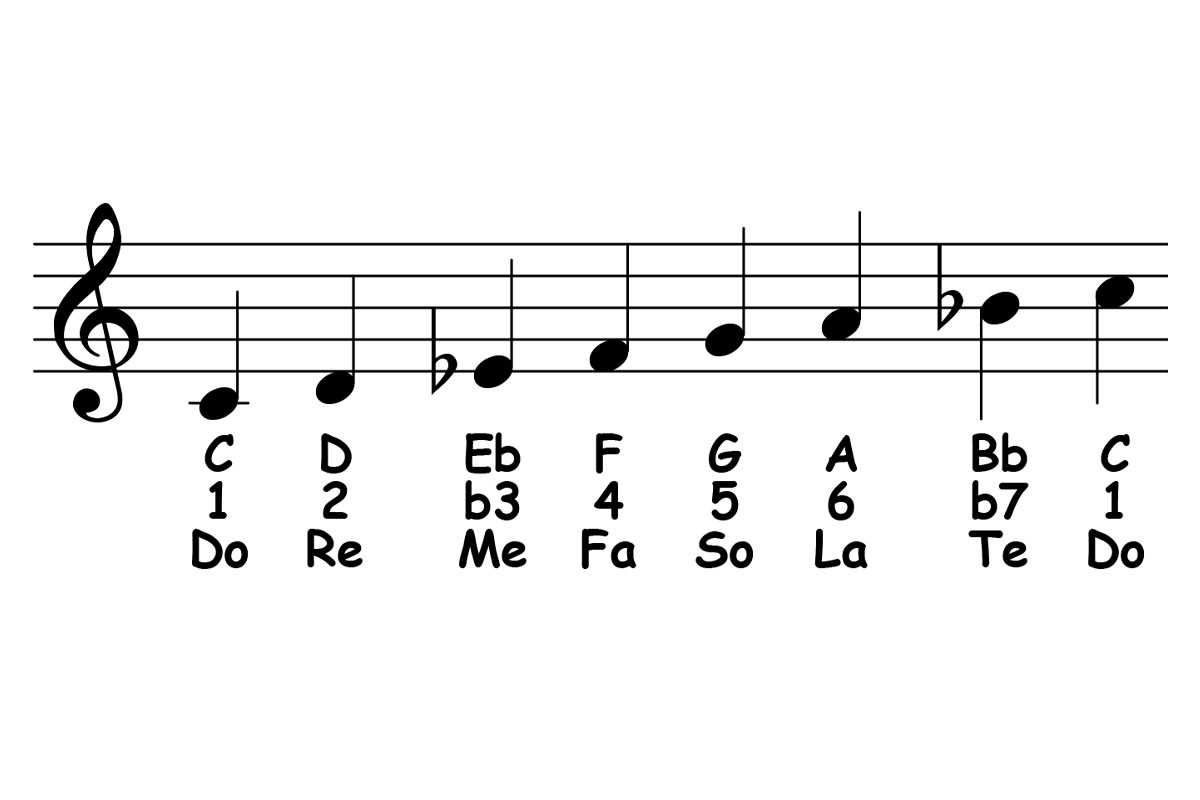Home>Production & Technology>Music Theory>What Is A Half Step In Music Theory?


Music Theory
What Is A Half Step In Music Theory?
Modified: February 9, 2024
Learn what a half step is in music theory and how it is used to create harmonies, melodies, and scales. Enhance your understanding of music theory with this comprehensive guide.
(Many of the links in this article redirect to a specific reviewed product. Your purchase of these products through affiliate links helps to generate commission for AudioLover.com, at no extra cost. Learn more)
Table of Contents
Introduction
Welcome to the fascinating world of music theory! If you’ve ever found yourself wondering about the intricacies of music, you’ve come to the right place. In this article, we’ll explore the concept of half steps in music theory, unraveling the mystery behind this fundamental building block of musical composition.
Music theory is the study of the underlying principles and elements that make up music. Understanding these principles is crucial for musicians, composers, and anyone interested in delving deeper into the art form. The concept of half steps is a critical aspect of music theory, as it helps determine the relationships between different notes and forms the basis for various musical structures.
Whether you’re a seasoned musician or a curious beginner, this article aims to provide a comprehensive explanation of what exactly a half step is and its significance in the world of music theory. By the end, you’ll have a clearer understanding of this fundamental musical concept and its role in creating harmonious melodies.
Definition of a Half Step
In music theory, a half step, also known as a semitone, is the smallest distance between two notes. It represents the shortest possible interval between any two adjacent pitches in our Western musical system. The concept of half steps is integral to understanding the structure and organization of melodies, harmonies, and scales.
To understand a half step, we can visualize it on a piano keyboard. If you look at the layout of the keys, you’ll notice that the white keys represent the natural notes (A, B, C, D, E, F, G), while the black keys are the sharps and flats that alter those natural notes. Moving from one adjacent key to the next, regardless of its color, represents a half step.
For example, if we start on the note C and move to the very next key, which in this case is the black key immediately to the right of C, we have moved a half step up. Similarly, if we move from C to the white key to the left, we have taken a half step down.
It’s important to note that not only piano keyboards have half steps. This concept applies to all musical instruments, including string instruments, wind instruments, and even vocals. No matter the instrument, the concept of a half step remains consistent.
A half step can also be described as the smallest change in pitch within our Western musical system. It represents the smallest interval that can be heard as a distinct difference in pitch by the human ear. Therefore, it plays a significant role in determining the overall tonality and mood of a piece of music.
Understanding the concept of half steps is essential when it comes to building scales, creating melodies, understanding chord progressions, and analyzing harmonic relationships. It forms the foundation upon which the entire musical structure is built, making it a vital component of music theory.
Relationship to Whole Steps
Now that we have a clear understanding of what a half step is, let’s explore its relationship to whole steps. A whole step, also known as a whole tone, is equivalent to two half steps. In other words, it represents the distance of two adjacent keys on a piano keyboard without any intervening keys.
To visualize a whole step on a piano keyboard, you can start on any note and skip over the next adjacent key, landing on the one after it. This skip represents a whole step. For example, starting on the note C and moving two keys to the right, skipping over the black key in between, would take you to the note D. This jump of two half steps is a whole step.
The relationship between half steps and whole steps is crucial in defining the structure of scales and intervals. In a major scale, for instance, the pattern of whole and half steps is consistent: whole step, whole step, half step, whole step, whole step, whole step, half step. This precise arrangement of intervals gives major scales their distinct sound and character.
On the other hand, in a minor scale, the pattern of intervals is different. It follows the sequence: whole step, half step, whole step, whole step, half step, whole step, whole step. Once again, the arrangement of half and whole steps plays a fundamental role in shaping the unique qualities of minor scales.
The relationship between half steps and whole steps extends beyond scales. This concept is also crucial when it comes to constructing chords and understanding chord progressions. By combining different intervals of half and whole steps, musicians create the foundation for harmony and melodic movement within a piece of music.
By now, you can see how half steps and whole steps are interconnected building blocks of music theory. They provide the framework for understanding the relationship between different notes and intervals, allowing musicians to create beautiful and cohesive musical compositions.
Notes in a Half Step
When discussing half steps, it’s essential to understand the relationship between notes within this interval. In Western music theory, each natural note is separated by a half step, except for the pairs of B-C and E-F, which are separated by a whole step. This distinction is due to the absence of sharps or flats between these pairs of notes.
Let’s take a closer look at the notes involved in a half step. On a piano keyboard, if we start on the note C and move a half step up, we land on the note C#. Similarly, moving a half step down from C takes us to the note B. This pattern remains consistent throughout the keyboard. For instance, a half step up from E is F, and a half step down from E is Eb.
The use of sharps (#) and flats (b) allows for the inclusion of all the notes within a half step interval. The sharp symbol (#) raises a note by a half step, while the flat symbol (b) lowers a note by a half step. These symbols add depth and flexibility to music notation, allowing for precise representation of pitch and tonality.
It’s important to note that enharmonic equivalents also come into play when discussing half steps. Enharmonic equivalents are two different names for the same pitch. For example, C# and Db are enharmonic equivalents, representing the same sound on the piano. The choice of which name to use depends on the key and harmonic context of the music being played.
Enharmonic equivalents are particularly important when modulating between different keys. For example, if a piece of music is in the key of C major and modulates to the key of G major, the note F# (the third note in the G major scale) is used. However, if the modulation is to the key of Db major, the note Cb (the seventh note in the Db major scale) is employed. Understanding the concept of enharmonic equivalents allows musicians to navigate seamlessly between different keys and tonalities.
By being aware of the notes involved in a half step and their relationship to sharps and flats, musicians can accurately perform and notate music, ensuring that the desired pitch and tonal quality are achieved.
Half Steps on the Piano
The piano is a remarkable instrument for visualizing and understanding half steps. Its arrangement of black and white keys provides a clear representation of the intervals between notes, including half steps.
On a piano keyboard, each key represents a different note, and moving from one key to the next represents a half step. This is true regardless of whether the keys are white or black. The pattern of the keys reflects the pattern of half and whole steps in Western music theory.
Let’s take a closer look at the layout of the piano. Starting from any note, if we move to the next key, regardless of its color, we have moved a half step. For example, if we start on the note C and move to the very next key, which is the black key immediately to the right of C, we have taken a half step up. Similarly, if we move from C to the white key to the left, we have taken a half step down.
The arrangement of the black keys on the piano also follows the pattern of half steps. If we observe the group of two black keys, also known as a whole step, we notice that moving from the left key to the right takes us up a whole step. However, moving from the right key to the left also takes us down a whole step. In other words, the black keys can function as both sharps and flats, allowing for flexibility in playing different notes and achieving various tonalities.
By exploring the layout of the piano keyboard, musicians can visualize and understand the concept of half steps more easily. This knowledge aids in playing scales, building chords, and creating melodic movement. It is a valuable tool for any aspiring pianist or musician seeking to develop a deeper understanding of music theory.
It is important to note that while the piano provides a visual representation of half steps, the concept applies to all musical instruments. Whether you are playing a guitar, violin, trumpet, or any other instrument, understanding half steps and their musical relationship is crucial for playing in tune and creating harmonically accurate music.
By familiarizing yourself with the layout of the piano keyboard and recognizing the intervals between notes, you can navigate the instrument more confidently and explore the vast world of music with greater understanding.
Importance of Half Steps in Music Theory
Half steps are vital in music theory as they form the foundation for understanding and creating music. They play a critical role in a variety of aspects, including scales, chords, melodies, harmonies, and modulation.
One of the primary uses of half steps is in constructing scales. The specific arrangement of whole and half steps in a scale determines its unique character and sound. For example, the major scale follows a pattern of whole, whole, half, whole, whole, whole, half steps. This arrangement creates the distinct and uplifting sound associated with major tonality. Conversely, the minor scale has a different pattern of intervals, including the sequence of whole, half, whole, whole, half, whole, whole steps, which gives it a more melancholic and somber quality.
Furthermore, half steps are crucial in building chords. Major and minor triads, which form the basis of many chords, are constructed using a combination of whole and half steps. For example, a major chord consists of a root, a major third, and a perfect fifth. The major third is made up of two half steps, while the perfect fifth is composed of three and a half steps. These precise intervals shape the unique sound and harmony of major chords.
In addition to scales and chords, half steps play a fundamental role in creating expressive melodies. Musicians often utilize half steps to introduce tension and release within a melodic line. The careful placement of half steps can add emotional depth, creating moments of anticipation or resolution that captivate the listener’s ear.
Half steps are also essential in understanding harmonic progressions and modulation. Modulation refers to the process of changing from one key to another within a musical composition. Half steps serve as the connecting thread between different keys, allowing smooth transitions and creating a sense of musical journey.
In summary, half steps are of utmost importance in music theory. They form the basis for constructing scales, building chords, creating melodies, and navigating harmonic progressions. Whether you are composing, performing, or analyzing music, a thorough understanding of half steps is crucial for achieving depth, coherence, and emotional impact within your musical endeavors.
Types of Half Steps
While the concept of a half step represents the smallest interval in Western music theory, it is important to note that not all half steps are created equal. There are two distinct types of half steps: diatonic and chromatic.
The diatonic half step, also known as a natural half step, is the standard half step found within a given key or scale. It follows the standard pattern of whole and half steps unique to that particular scale. For example, in the key of C major, the diatonic half steps occur between the notes E and F, as well as between B and C. These half steps adhere to the specific intervals dictated by the major scale and are consistent with the overall tonality of the key.
On the other hand, a chromatic half step is not bound by the intervals of a specific key or scale. It involves moving from one note to the note immediately above or below it on the chromatic scale, regardless of its relationship to the key or scale being played. In simpler terms, a chromatic half step is a half step that doesn’t belong to the current key or scale. For example, in the key of C major, a chromatic half step could be moving from C to C# or from C to Cb.
Chromatic half steps are often used for expressive purposes, adding tension, or creating interesting melodic or harmonic color. They can be used to introduce passing tones, embellishments, or dissonances, adding depth and complexity to a musical composition.
Understanding the distinction between diatonic and chromatic half steps is crucial when analyzing and interpreting a piece of music. It helps musicians make informed decisions about the interpretation, phrasing, and overall tonal quality they want to achieve.
It is worth noting that some musical instruments, such as string instruments or wind instruments with continuous pitch control, can produce microtonal half steps. Microtonal music explores the spaces between traditional half steps, introducing additional pitch options and tonal possibilities. While microtonal music extends beyond the scope of diatonic and chromatic half steps, it demonstrates the infinite complexity and richness that can arise from exploring the nuances of pitch.
In summary, there are two primary types of half steps: diatonic and chromatic. Diatonic half steps adhere to the intervals of a specific key or scale, while chromatic half steps can move freely outside the constraints of a given key. Both types offer unique possibilities for creating musical interest, tension, and tonal color.
Conclusion
Understanding the concept of half steps is essential for anyone interested in delving into the world of music theory. Half steps form the building blocks of scales, chords, melodies, and harmonies, playing a crucial role in shaping the overall tonality and emotional impact of a musical composition.
We discussed the definition of a half step, which is the smallest distance between two notes in Western music. We also explored its relationship to whole steps, emphasizing how the combination of these intervals creates the unique qualities of scales, chords, and harmonies.
Exploring the notes within a half step, we discovered the significance of sharps, flats, and enharmonic equivalents. These elements are crucial for accurately notating and performing music, ensuring that the desired pitch and tonal quality are achieved.
The piano served as a valuable visual aid in understanding half steps, clarifying the arrangement of keys and their relationship to intervals. However, it is important to note that half steps apply to all musical instruments, each with its unique way of producing and representing these intervals.
We highlighted the importance of half steps in music theory, illustrating how they are fundamental in constructing scales, building chords, creating melodies, and navigating harmonic progressions. Half steps provide the framework for musical expression and communication, allowing musicians to convey depth, emotion, and coherence within their compositions.
Lastly, we explored the different types of half steps—diatonic and chromatic. Diatonic half steps follow the intervals of a specific key or scale, while chromatic half steps introduce color and tension by moving outside the constraints of a given key. Understanding these distinctions empowers musicians to make thoughtful decisions and interpretations when performing music.
In conclusion, the concept of half steps serves as a gateway to exploring the intricate world of music theory. By grasping the significance of half steps and their various applications, musicians can develop a deeper understanding of musical structure, unlocking endless possibilities for creativity and expression.











